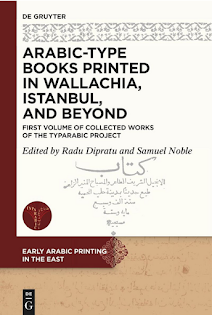Daniel Galadza and Alex C. J. Neroth van
Vogelpoel, “Multilingualism in the Divine Liturgy of St. John Chrysostom
Among the Melkites,” ARAM 31:1-2 (2019), 35–50
Abstract
This paper examines elements of multilingualism in the text and
celebration of the Divine Liturgy of St. John Chrysostom among the
Melkites, from the eighth to thirteenth centuries. The main focus for
this investigation is the manuscript Sinai Gr. N.E. X 239, a
thirteenth-century bilingual Greek-Syriac manuscript with Arabic
marginal notes found among the Sinai New Finds in 1975, which contains
the text of the Divine Liturgy of St. John Chrysostom. The fourteen
paper folios of the booklet containing the Divine Liturgy include a
particular zeon rite during the Communion of the clergy. The texts and
rubrics of the liturgical service are often repeated in Greek and
Syriac, along with three Arabic marginal notes, which suggest the
copyist and those praying from the manuscript were more familiar with
Arabic and Syriac than they were with Greek. Nevertheless, Greek was
used as a liturgical language. Comparison with other Syriac Melkite
liturgical manuscripts, in particular with the thirteenth-century
Euchologion Vatican Borg. Syr. 13, brings forward certain peculiarities
of Melkite liturgical practice. Many of these Syriac Melkite liturgical
texts have been examined by Cyrille Korolevsky, Joseph Nasrallah, and
Heinrich Husmann, but their observations remain only preliminary to this
day. The study of Syriac Melkite liturgical texts is accompanied by a
comparison with Greek and Georgian liturgical texts originating in the
Chalcedonian Patriarchates of Antioch and Jerusalem, facilitated by
recent research on the Greek and Georgian Euchologion from Jerusalem and
Palestine by Heinzgerd Brakmann and Tinatin Chronz. The paper concludes
by outlining what elements constitute unique Melkite liturgical
practices in the Divine Liturgy, how they were celebrated in the
multilingual environment in which Melkite Christians lived and prayed,
and how the liturgical practices and rites were related to the liturgy
of the Byzantine Rite in Constantinople and elsewhere.
Read the entire article here.








No comments:
Post a Comment